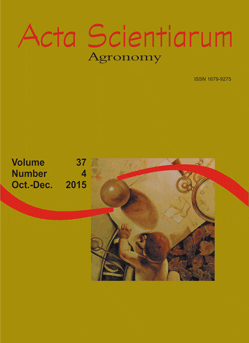<b>Hierarchical genetic clusters for phenotypic analysis
Abstract
Methods to obtain phenotypic information were evaluated to help breeders choosing the best methodology for analysis of genetic diversity in backcross populations. Phenotypes were simulated for 13 characteristics generated in 10 populations with 100 individuals each. Genotypic information was generated from 100 loci of which 20 were taken at random to determine the characteristics expressing two alleles. Dissimilarity measures were calculated, and genetic diversity was analyzed through hierarchical clustering and graphic projection of the distances. A backcross was performed from the two most divergent populations. A set of characteristics with variable heritability was taken into account. The environmental effect was simulated assuming . For hierarchical clusters, the following methods were used: Gower Method, average linkage within the cluster, average linkage among clusters, the furthest neighbor method, the nearest neighbor method, Ward’s method, and the median method. The environmental effect and heritability of the analyzed variables had an influence on the pattern of hierarchical clustering populations according to the backcrossed generations. The nearest neighbor method was the most efficient in reconstructing the system of backcrossing, and it presented the highest cophenetic correlation. The efficiency of the nearest neighbor method was the highest when the analysis involved characteristics of high heritability.
Downloads
DECLARATION OF ORIGINALITY AND COPYRIGHTS
I Declare that current article is original and has not been submitted for publication, in part or in whole, to any other national or international journal.
The copyrights belong exclusively to the authors. Published content is licensed under Creative Commons Attribution 4.0 (CC BY 4.0) guidelines, which allows sharing (copy and distribution of the material in any medium or format) and adaptation (remix, transform, and build upon the material) for any purpose, even commercially, under the terms of attribution.




















































